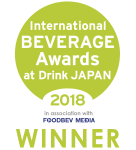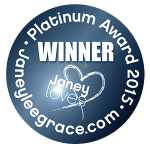Anaerostipes is a spore-forming genus of anaerobic, Gram-positive bacteria that are commonly found in the human gut microbiota. Anaerostipes are part of the Firmicutes phylum and are known for their role in fermenting carbohydrates and producing short-chain fatty acids, particularly butyrate.1Lee JY, Kang W, Shin NR, Hyun DW, Kim PS, Kim HS, Lee JY, Tak EJ, Sung H, Bae JW. Anaerostipes hominis sp. nov., a novel butyrate-producing bacteria isolated from faeces of a patient with Crohn’s disease. Int J Syst Evol Microbiol. 2021 Dec;71(12). doi: 10.1099/ijsem.0.005129.2Kadowaki, R., Tanno, H., Maeno, S., & Endo, A. (2023). Spore-forming properties and enhanced oxygen tolerance of butyrate-producing Anaerostipes spp. Anaerobe, 82, 102752. doi: 10.1016/j.anaerobe.2023.102752.
Roles of Anaerostipes species in human health
- Butyrate production: Anaerostipes species are known for producing butyrate, a short-chain fatty acid crucial for maintaining gut health, promoting a healthy gut barrier, and possessing anti-inflammatory properties.3Duncan SH, Louis P, Flint HJ. Lactate-utilizing bacteria, isolated from human feces, that produce butyrate as a major fermentation product. Appl Environ Microbiol. 2004 Oct;70(10):5810-7. doi: 10.1128/AEM.70.10.5810-5817.2004.4Allen-Vercoe E, Daigneault M, White A, Panaccione R, Duncan SH, Flint HJ, O’Neal L, Lawson PA. Anaerostipes hadrus comb. nov., a dominant species within the human colonic microbiota; reclassification of Eubacterium hadrum Moore et al. 1976. Anaerobe. 2012 Oct;18(5):523-9. doi: 10.1016/j.anaerobe.2012.09.002.
- Gut microbiota balance: Anaerostipes can contribute to the overall balance of the gut microbiome, potentially limiting the growth of pathogenic bacteria by competitive exclusion.5Bui TPN, Schols HA, Jonathan M, Stams AJM, de Vos WM, Plugge CM. Mutual Metabolic Interactions in Co-cultures of the Intestinal Anaerostipes rhamnosivorans With an Acetogen, Methanogen, or Pectin-Degrader Affecting Butyrate Production. Front Microbiol. 2019 Nov 1;10:2449. doi: 10.3389/fmicb.2019.02449.
- Immune modulation: Although this area is still under active research, there’s evidence to suggest that butyrate-producing bacteria like Anaerostipes play a role in immune system modulation.6Singh V, Lee G, Son H, Koh H, Kim ES, Unno T, Shin JH. Butyrate producers, “The Sentinel of Gut”: Their intestinal significance with and beyond butyrate, and prospective use as microbial therapeutics. Front Microbiol. 2023 Jan 12;13:1103836. doi: 10.3389/fmicb.2022.1103836.7Parada Venegas D, De la Fuente MK, Landskron G, González MJ, Quera R, Dijkstra G, Harmsen HJM, Faber KN, Hermoso MA. Short Chain Fatty Acids (SCFAs)-Mediated Gut Epithelial and Immune Regulation and Its Relevance for Inflammatory Bowel Diseases. Front Immunol. 2019 Mar 11;10:277. doi: 10.3389/fimmu.2019.00277.8Yoo JY, Groer M, Dutra SVO, Sarkar A, McSkimming DI. Gut Microbiota and Immune System Interactions. Microorganisms. 2020 Oct 15;8(10):1587. doi: 10.3390/microorganisms8101587.
Best sources of Anaerostipes
Anaerostipes species naturally inhabit the human gut and can be promoted by a fibre-rich diet. No food sources of Anaerostipes or specialised Anaerostipes probiotic supplements are available at present.
What foods can Anaerostipes feed on?
Anaerostipes species primarily feed on carbohydrates that are non-digestible by humans, particularly complex fibres like inulin, fructooligosaccharides (FOS), and other prebiotic fibres found in foods like garlic, onion, and whole grains.9Barber C, Mego M, Sabater C, Vallejo F, Bendezu RA, Masihy M, Guarner F, Espín JC, Margolles A, Azpiroz F. Differential Effects of Western and Mediterranean-Type Diets on Gut Microbiota: A Metagenomics and Metabolomics Approach. Nutrients. 2021 Jul 30;13(8):2638. doi: 10.3390/nu13082638. Anaerostipes species are also cross-feeders, so they can convert lactate and acetate into butyrate.10Shetty SA, Boeren S, Bui TPN, Smidt H, de Vos WM. Unravelling lactate-acetate and sugar conversion into butyrate by intestinal Anaerobutyricum and Anaerostipes species by comparative proteogenomics. Environ Microbiol. 2020 Nov;22(11):4863-4875. doi: 10.1111/1462-2920.15269.
Where to find Anaerostipes in the Chuckling Goat Gut Microbiome Test
You will find your Anaerostipes score in the “Butyrate” section of the “Postbiotics” report in your Chuckling Goat Gut Microbiome Test results.
Synonyms: Anaerostipes species don’t have any well-recognised synonyms, but they are often categorised with other butyrate-producing bacteria when discussed in the context of gut health.
Important disclaimer
The Chuckling Goat Gut Microbiome Handbook is an educational resource built to translate complex science into plain English. The information provided on this page is not intended to be a substitute for professional medical advice, diagnosis, or treatment. Always seek the advice of your GP or other qualified health provider with any questions you may have regarding a medical condition. Always check with your GP for interactions with medications/health conditions before changing your diet or starting to take food supplements.
References
- 1Lee JY, Kang W, Shin NR, Hyun DW, Kim PS, Kim HS, Lee JY, Tak EJ, Sung H, Bae JW. Anaerostipes hominis sp. nov., a novel butyrate-producing bacteria isolated from faeces of a patient with Crohn’s disease. Int J Syst Evol Microbiol. 2021 Dec;71(12). doi: 10.1099/ijsem.0.005129.
- 2Kadowaki, R., Tanno, H., Maeno, S., & Endo, A. (2023). Spore-forming properties and enhanced oxygen tolerance of butyrate-producing Anaerostipes spp. Anaerobe, 82, 102752. doi: 10.1016/j.anaerobe.2023.102752.
- 3Duncan SH, Louis P, Flint HJ. Lactate-utilizing bacteria, isolated from human feces, that produce butyrate as a major fermentation product. Appl Environ Microbiol. 2004 Oct;70(10):5810-7. doi: 10.1128/AEM.70.10.5810-5817.2004.
- 4Allen-Vercoe E, Daigneault M, White A, Panaccione R, Duncan SH, Flint HJ, O’Neal L, Lawson PA. Anaerostipes hadrus comb. nov., a dominant species within the human colonic microbiota; reclassification of Eubacterium hadrum Moore et al. 1976. Anaerobe. 2012 Oct;18(5):523-9. doi: 10.1016/j.anaerobe.2012.09.002.
- 5Bui TPN, Schols HA, Jonathan M, Stams AJM, de Vos WM, Plugge CM. Mutual Metabolic Interactions in Co-cultures of the Intestinal Anaerostipes rhamnosivorans With an Acetogen, Methanogen, or Pectin-Degrader Affecting Butyrate Production. Front Microbiol. 2019 Nov 1;10:2449. doi: 10.3389/fmicb.2019.02449.
- 6Singh V, Lee G, Son H, Koh H, Kim ES, Unno T, Shin JH. Butyrate producers, “The Sentinel of Gut”: Their intestinal significance with and beyond butyrate, and prospective use as microbial therapeutics. Front Microbiol. 2023 Jan 12;13:1103836. doi: 10.3389/fmicb.2022.1103836.
- 7Parada Venegas D, De la Fuente MK, Landskron G, González MJ, Quera R, Dijkstra G, Harmsen HJM, Faber KN, Hermoso MA. Short Chain Fatty Acids (SCFAs)-Mediated Gut Epithelial and Immune Regulation and Its Relevance for Inflammatory Bowel Diseases. Front Immunol. 2019 Mar 11;10:277. doi: 10.3389/fimmu.2019.00277.
- 8Yoo JY, Groer M, Dutra SVO, Sarkar A, McSkimming DI. Gut Microbiota and Immune System Interactions. Microorganisms. 2020 Oct 15;8(10):1587. doi: 10.3390/microorganisms8101587.
- 9Barber C, Mego M, Sabater C, Vallejo F, Bendezu RA, Masihy M, Guarner F, Espín JC, Margolles A, Azpiroz F. Differential Effects of Western and Mediterranean-Type Diets on Gut Microbiota: A Metagenomics and Metabolomics Approach. Nutrients. 2021 Jul 30;13(8):2638. doi: 10.3390/nu13082638.
- 10Shetty SA, Boeren S, Bui TPN, Smidt H, de Vos WM. Unravelling lactate-acetate and sugar conversion into butyrate by intestinal Anaerobutyricum and Anaerostipes species by comparative proteogenomics. Environ Microbiol. 2020 Nov;22(11):4863-4875. doi: 10.1111/1462-2920.15269.













